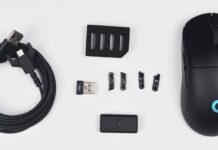Lightweight Champion!
Review Summary
The Keychron M3 Mini V2 features a lightweight build, an excellent PixArt PAW3950 sensor, and support for a polling rate of up to 8000Hz, positioning it well for competitive players. Adding in reliable wireless options, long battery life, and thoughtful additions like the extension adapter and flexible cable, you’re getting a very complete package.
Hours Tested: 1 Week
Overall
-
Design - 9/10
9/10
-
Build Quality - 8.5/10
8.5/10
-
Performance - 9/10
9/10
-
Software - 8.5/10
8.5/10
-
Connectivity - 9/10
9/10
Pros
- Smooth matte coating
- Ergonomic shape
- Remarkable performance
- Versatile connectivity
- Lightweight
Cons
- Slight flex under pressure
- Reduced battery life at high polling rates
- Hump may not suit larger hands
- No RGB lighting
For me, whenever someone mentions Keychron, their keyboards are the first to come to mind. I’d bet that’s true for most keyboard enthusiasts as well, since that’s really how they started getting noticed in the first place. Moreover, what’s interesting is that their mouse lineup is growing rapidly as well, and it’s becoming a big part of their identity in the peripherals scene.
They already have three series under their portfolio, including the M, G, and BM series, with the M series being their primary focus. One of those was the Keychron M3, a lightweight wireless gaming mouse with extraordinary performance. Now, the Keychron is building on that success with the M3 Mini V2, which takes the same winning formula but trims it down into a smaller, more compact form.
Key Takeaways
- The Keychron M3 Mini V2 is a compact, lightweight wireless mouse designed for gamers and productivity users who need top-tier performance without overspending.
- You should consider the Keychron M3 Mini V2 if you want top-tier performance without breaking the bank, prefer lightweight mice, and value flexibility.
- You should skip the Keychron M3 Mini V2 if you rely on extra features like RGB, want an ultra-durable build, and need extended battery life.
Here are the technical specifications:
| Version | 8K |
| Size | 120x65x39mm |
| Weight | 55g |
| Sensor | PixArt 3950 |
| DPI (CPI) Range | 100 – 30000 |
| Mouse Micro Switches | Huano Micro Switch (80 million clicks lifetime) |
| Connection Mode | 2.4GHz – Bluetooth – Wired |
| Wireless Distance | Approximately 10m of open space |
| IPS | 750 |
| Polling Rate (highest level) | 8000 Hz (2.4 GHz / Wired mode) |
| MCU | Realtek 8762G |
| Lift Off Distance | 0.7 mm / 1.0 mm / 2.0 mm |
| Tracks on glass (min. 4 mm thickness) | Yes (max 1KHz report rate) |
| Bluetooth Version | 5.3 |
| Battery Capacity | 600mAh |
| Battery Life | Up to 140 hours |
| Usage Duration |
|
| Recharge Time | 2 Hours |
| Charging Port | Type-C |
| Report Rate (Polling Rate) | 125Hz (White) – 500Hz (Blue) – 1000Hz (Red) – 2000Hz (White + Blue) – 4000Hz (White + Red) – 8000Hz (White + Blue + Red) |
What Makes the Keychron M3 Mini V2 Different?
The M3 Mini V2 builds upon everything Keychron did with the original M3, refining it into a more compact form that retains the same high-end sensor options and wireless connectivity in a lighter and more streamlined package. Unlike its predecessor, which weighed around 79 g, the Mini V2 reduces that down to 55 g while still retaining the features that few other mice at this price point offer.
Packaging & Unboxing
The M3 Mini V2 arrives in an all-black box and slipcover. On the front, you’ll find an image of the mouse, along with the Keychron branding, and a gold badge that highlights the 8KHz polling rate. Additionally, key features are written with small icons along the sides. On the back, you’ll find the technical specifications, along with the mouse’s dimensions, and some of the features from the sides are repeated here.
Box Contents
-
Box Contents
The main box has its own lift-off lid, and underneath is a thin black sheet, similar to a soft foam layer, which helps keep the mouse safe. Once that’s removed, you’ll see two separate compartments made of the same foam. The mouse is placed in one, while the other has accompanying accessories. Here is the list of everything that you’ll find inside the box:
- Keychron M3 Mini V2
- USB Type-C to Type-C Cable
- Extension Adapter For Receiver
- Type-A 2.4 GHz Receiver
- Type-A to Type-C Adapter
- User Manual
Design
-
Design
Keychron calls the M3 Mini V2 their ultimate ergonomic design, and they’re not too far off from what they claim. The shape has a great curve to it that suits my hand perfectly. I didn’t feel any strain even after continuous usage. It features a gentle arch with a few curves along the sides. As for the size, it measures approximately 120mm in length, 65mm in width, and 39mm in height.
On paper, that sounds compact, but it doesn’t really feel cramped at all. This exclusion could be a great thing for some, or a drawback that you won’t find any flashy RGB or excessive gamer styling here. Aesthetically, the M3 Mini V2 maintains a clean and minimalist design. It’s available in two colours, including black and white, and I’ve been testing the white variant.
Grip Styles
The Keychron M3 Mini V2 features a symmetrical shape with a relatively tall hump in the middle, which significantly influences its feel across various grip styles. The height provides decent palm support, although if you prefer claw or fingertip grips, it may feel somewhat limiting, especially with larger hands. In those grips, the hump gets in the way when you curl your fingers tighter.
Although it feels really nimble for smaller to medium hands, where flicks and quick movements feel natural, and the curves help it from feeling flat or uncomfortable after a while. If you’re a palm-grip user, the taller hump fills your hand nicely. Lastly, resting your whole hand on it works pretty well, although users with larger hands might wish it had a bit more length.
Weight
-
Hump
At just 55 grams, the Keychron M3 Mini V2 is incredibly light, making it feel remarkably easy to move. You barely notice any weight when moving it across the mousepad. Surprisingly, it doesn’t feel hollow or cheap at all. Some really light mice can feel flimsy or like they might break when pressed hard. Fortunately, this one avoids that common problem.
It has the right amount of lightness and flexibility, allowing you to use it for longer gaming or work sessions without your hand getting tired. If you’ve been using something heavier in the 70–80 g range, the difference is immediately noticeable. Lastly, its weight distribution is centered appropriately, as it doesn’t feel front or back-heavy.
Coating
-
Coating
Keychron opted for a matte finish on the M3 Mini V2, which feels quite pleasant. Out of all the matte finishes that I have seen on the mice that I have reviewed, it might be one of the best I’ve felt on a mouse. The surface feels smooth, and it grips comfortably without being slippery. The fingerprints aren’t really a problem here, while the smudges are hardly noticeable.
Even after a few hours of continuous usage, during which my hand got sweaty, it still looked clean enough. Some glossy mice may look cool at first, but they become greasy very quickly. Thankfully, this one doesn’t, as the matte feels the same if your hands are dry or even slightly wet. I’m not worried about it getting a yellowish tint, which is something I usually worry about with my lighter-colored peripherals.
Underside
-
Underside
The M3 Mini V2 features pre-rounded PTFE feet, covering a significant portion of the base. When you move it around, the glide remains smooth, regardless of your play style, whether it is fast flicks, slow tracking, or anything in between. In the middle section, there’s this small sensor cutout, and a bit above it, you’ll see a switch for switching between wireless and Bluetooth.
Just to the left of that switch, there’s the DPI button, and a tiny light indicator that shows your current DPI. The color changes depending on the DPI you’re using. On the other side of the switch, there’s a Report Rate button with its own light indicator, which works in the same way. Both of these buttons allow you to change settings on the go without needing to open the software during gameplay.
Build Quality
-
Build Quality
For something that weighs only around 55 grams, the M3 Mini V2 actually feels more solid than you’d expect. The shell feels sturdy in the hand, and the finish conveys a sense of durability. Although if you really start pressing around and looking for weak spots, you’ll find a bit of flex in some areas.
For example, there’s a faint creak if you push down hard, but that’s not something you’d ever notice during everyday use. It gives in somewhat under pressure, which is pretty standard for lightweight mice in this price range. None of this significantly impacts performance. As per my usage, it still feels well-built, which is what actually matters.
Primary Buttons
-
Primary Buttons
Keychron went with Huano Blue Shell Pink Dot mechanical switches for the main buttons on the M3 Mini V2. The clicks have a clean, crisp snap to them with the right amount of tactility to make every press feel satisfying without becoming heavy. They’re said to be rated for around 80 million clicks, so they should work for quite a while.
When using it, both primary buttons feel evenly balanced, with almost no pre-travel. The buttons are nicely spaced from the shell, so you won’t be hitting them by accident even if your fingers rest a bit heavy on top. As for sound, they have a sharp, tactile feel but don’t come across as too loud. It’s the kind of feedback that feels pleasing, primarily if you’re used to mice where the clicks can feel mushy over time.
Side Buttons
-
Scroll Wheel
The two side buttons on the M3 Mini V2 are positioned in a spot where the thumb naturally rests, allowing you to use them without adjusting your grip. They’re raised a little, so you can tell them apart by touch, which helps a lot in avoiding random misclicks mid-game. When you press them, they’ve got that sharp little click.
In comparison, the main buttons have the same matte finish as the rest of the mouse, but the side buttons have a smoother plastic texture, resulting in a slight contrast. For a better grip, Keychron added this little patterned texture on both sides of the mouse. Since this mouse is technically ambidextrous, although the shape still favors right-handed use, it’s nice that left-handed users aren’t entirely left out.
Scroll Wheel
The scroll wheel on the Keychron M3 Mini V2 features a standard rubberized texture that provides a decent grip. Each notch feels clearly defined, so you don’t get that loose or free-spin sensation. It’s more precise, which works well for both gaming and productivity. Its steps between scrolls are clearly defined, so you always know exactly how far you’ve moved.
The scroll wheel remains relatively quiet while in use. Still, you can feel a bit of tactile resistance with each step. The middle click is also responsive, with a solid actuation force that avoids being either too stiff or too soft. There’s no tilt function or side scroll here, so it’s strictly a notched vertical wheel. In day-to-day use, it performs consistently well.
Connectivity
-
Connectivity
You’re getting three different ways to use it, including wired via USB-C, 2.4GHz wireless with the included dongle, and 5.3GHz Bluetooth. Switching between them is seamless, making it highly convenient. The 2.4GHz connection is stable, with no noticeable lag or dropouts. Keychron rates the wireless distance at around 10 meters in open space. Moreover, it has an extension adapter for the wireless receiver.
Instead of plugging the dongle directly into the back of your PC, you can use the extension to bring it closer to your mouse. Moreover, going wired means you don’t have to worry about battery life at all. The included USB-C to USB-C cable is lightweight and flexible, with a paracord feel, so it doesn’t drag on the desk too much. Lastly, the Bluetooth connection is suitable for regular use or when you’re trying to conserve battery.
Battery Life
It features a 600mAh battery, rated for approximately 140 hours of use, depending on the selected mode and polling rate. Keychron lists the battery life with respect to its usage, which is approximately 140 hours on Bluetooth, around 120 hours at 1,000Hz, 45 hours at 4,000Hz, and 40 hours at 8,000Hz. From my testing, those numbers are pretty close to what you actually get in real use.
Charging is also relatively quick, with support for a 5V charging voltage and 300mA current. It takes almost 2 hours to charge the battery completely, and you can use it while it’s plugged in. There’s also an auto-sleep mode, which doesn’t work in wired mode, but when you’re connected via 2.4GHz or Bluetooth, the mouse automatically goes to sleep after 15 minutes of idle time.
Software
Instead of forcing you to download bloated software, Keychron has opted for a web-based configurator called Keychron Launcher. It’s an online software that opens in your browser, allowing you to customize all the necessary settings. In there, you can remap buttons, add shortcuts, set up your own macros, and even adjust settings like LOD, polling rate, or DPI.
The mouse also stores up to five onboard profiles, making it easy to swap between them. It works adequately on Windows, macOS, and Linux. I’ve tried it on Chrome and Edge without any issues, and even Opera seems to handle it correctly. Another nice thing is that it’s always up to date. Since it runs online, you don’t really have to deal with updates yourself.
Performance
The Keychron M3 Mini V2 is built around the PixArt PAW3950 sensor. It offers a DPI range of 100 to 30,000, a 750 IPS, and a 50G acceleration. As per my usage, it tracks really well with smooth flicks, steady aim, and small, precise movements, all of which feel consistent. Most people usually stick around 1000Hz or maybe 2000Hz, and even that feels smooth.
However, if your setup can handle it, using 4000Hz or even 8000Hz provides the response that many competitive players strive for. I didn’t notice any delay or weird lag during use, and I tried all three lift-off distances, which range from 0.7 to 0.10 to 2.0mm, and ended up sticking with 0.7mm, as it felt better. During testing, I didn’t encounter spin-outs, jitter, or unwanted acceleration on cloth mousepads.
Should You Buy it?
Buy it if
✅ You want top-tier performance without breaking the bank: The Keychron M3 Mini V2 offers flagship-level specs, such as 8K polling rate, PixArt PAW3950 sensor, and multi-mode connectivity at a reasonable price.
✅ You prefer lightweight and comfortable mice: Weighing only 55g, the M3 Mini V2 feels effortless to move, making it ideal for long gaming or work sessions without hand fatigue.
✅ You value flexibility and compatibility: With support for 2.4GHz wireless, Bluetooth 5.3, and wired Type-C connections, you can easily choose the connection mode that suits you best.
Don’t buy it if
❌ You rely on extra features like RGB or side scroll: The M3 Mini V2 keeps things minimal, like there’s no RGB lighting, tilt wheel, or extra programmable buttons beyond the essentials.
❌ You want ultra-durable build: While the build quality is solid for its weight, there’s a bit of flex if you press hard on the sides or bottom, which might not appeal to those expecting tank-like sturdiness.
❌ You need long battery life at maximum polling rate: The 8KHz polling mode drains the battery faster, so if you’re gaming continuously, you might need to connect the cable.
Final Verdict
The Keychron M3 Mini V2 is hard to overlook, offering different pricing and a variety of options. They got four versions of the M3 Mini V2. There’s a top-tier model with a PixArt 3950 sensor and 8K polling for about $60, followed by a 3395 version that supports 4K polling at $55, another 3395 with standard 1K polling for $50, and finally, a 3311 model at $40, which is ideal for those who want the basics.
All of them are well-priced for what they offer, but the clear standout is the model I tested, the PAW3950, which offers 8K polling at $60. It delivers the absolute best performance that Keychron has to offer, while still being very reasonable compared to other brands’ high-end mice. After spending some time with it, I’d say the M3 Mini V2 pretty much nails what it sets out to do, and for the price, that’s tough to beat.
Coming Next: Keychron K2 HE Review
Thank you! Please share your positive feedback. 🔋
How could we improve this post? Please Help us. 😔
[Hardware Reviewer]
After many years of exploiting various pieces of hardware, Abdul Hannan now serves as an editor at Tech4Gamers. He’s been in the PC hardware reviewing industry for almost a decade, and his staff of passionate geeks and reviewers is second to none.
Abdul Hannan is constantly seeking new methods, you will always see him running into New Computer Courses to improve the performance of his computer components since he is an ardent overclocker. He is well-known for providing the most extensive and unbiased analysis of the newest and greatest hardware for PC gaming, including everything from GPUs to PSUs.


 Threads
Threads
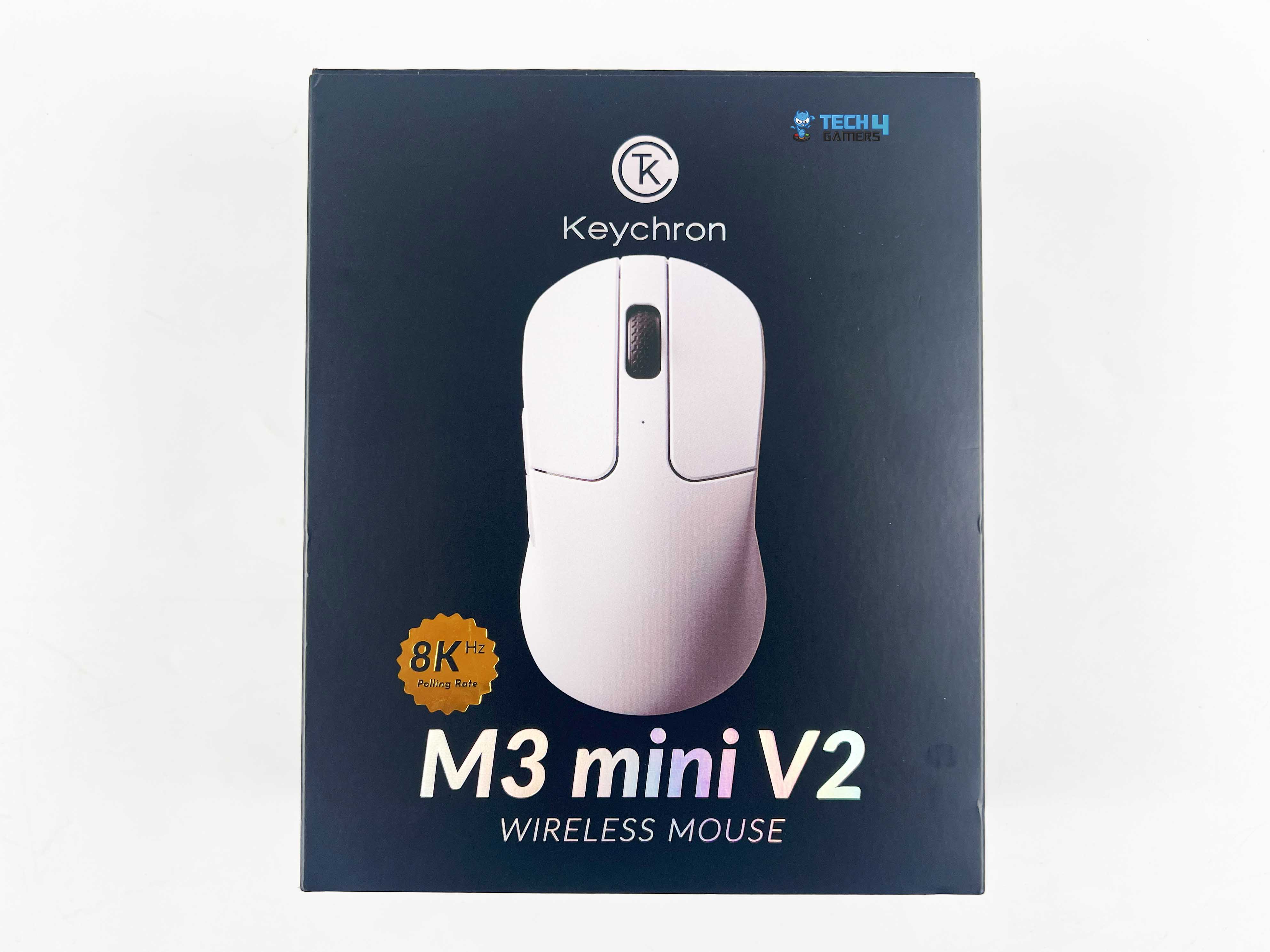
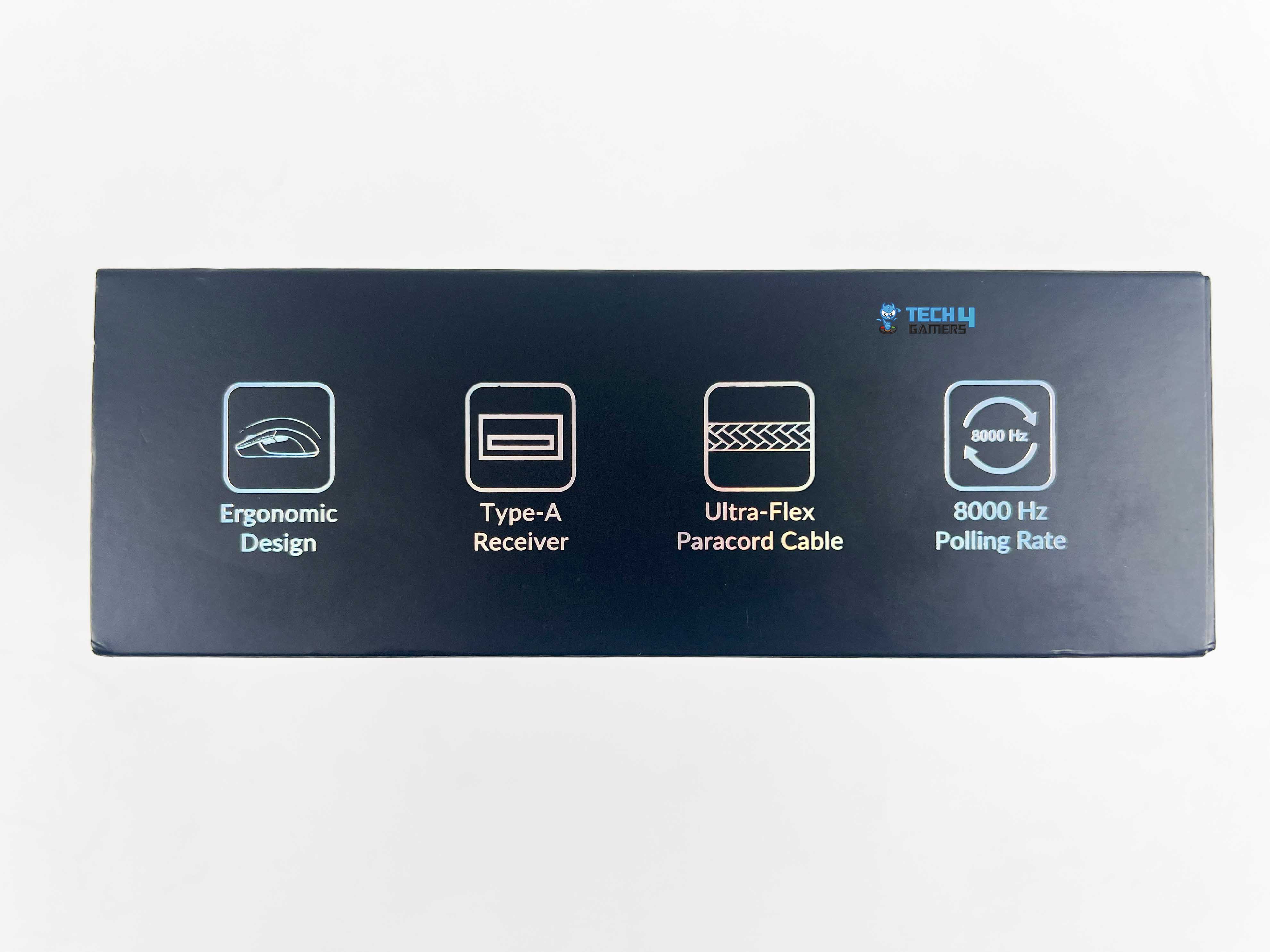
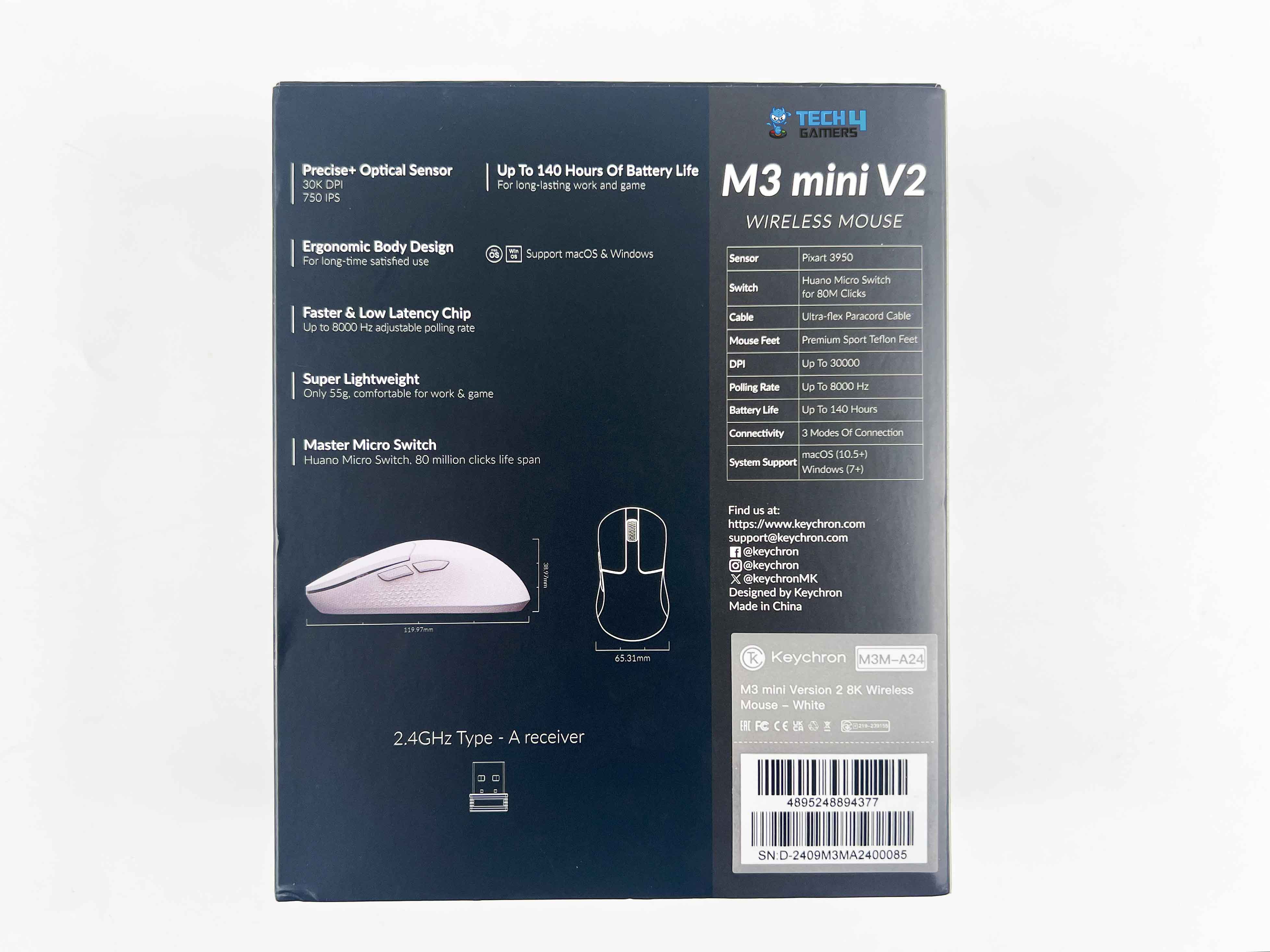
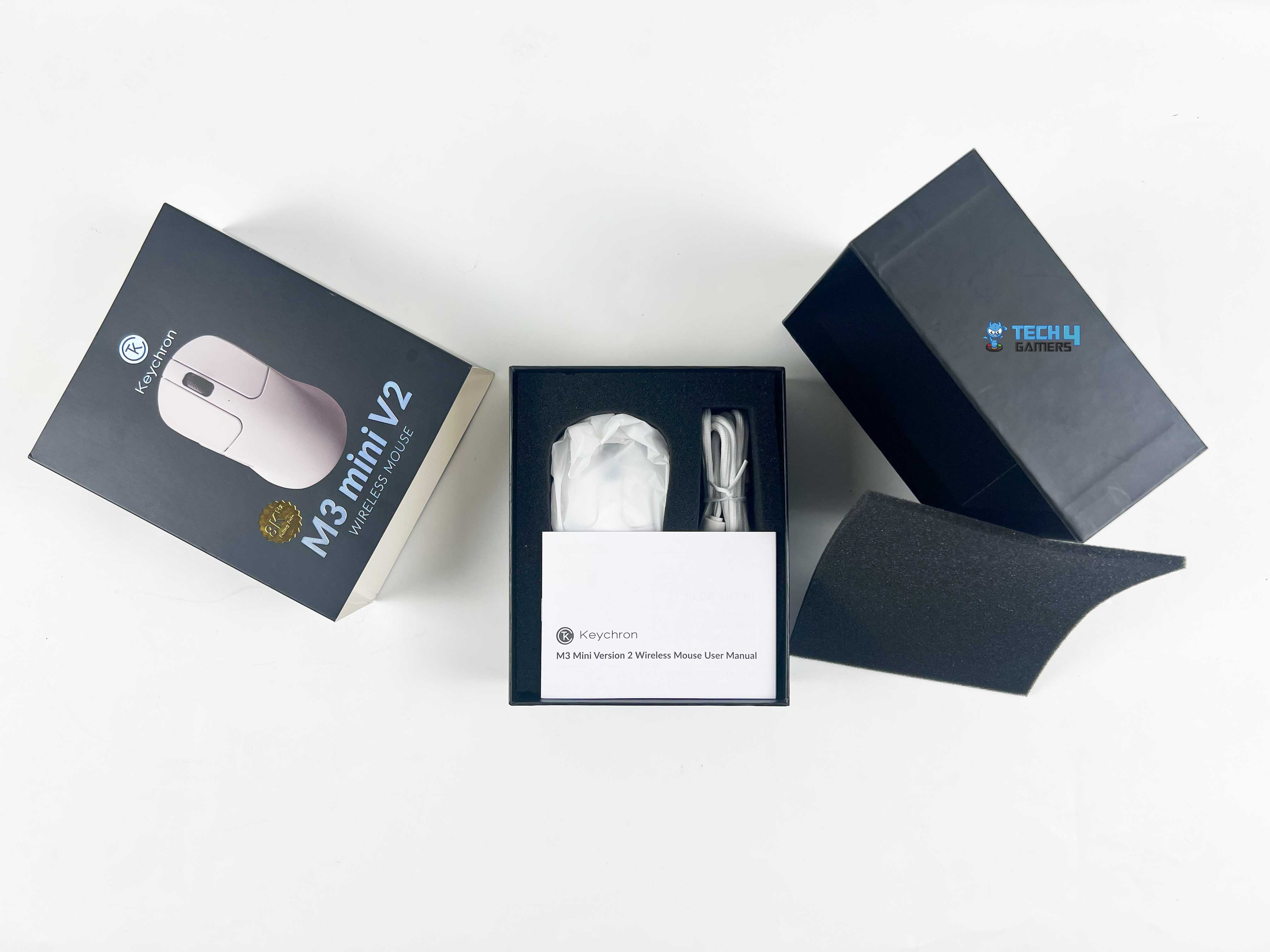
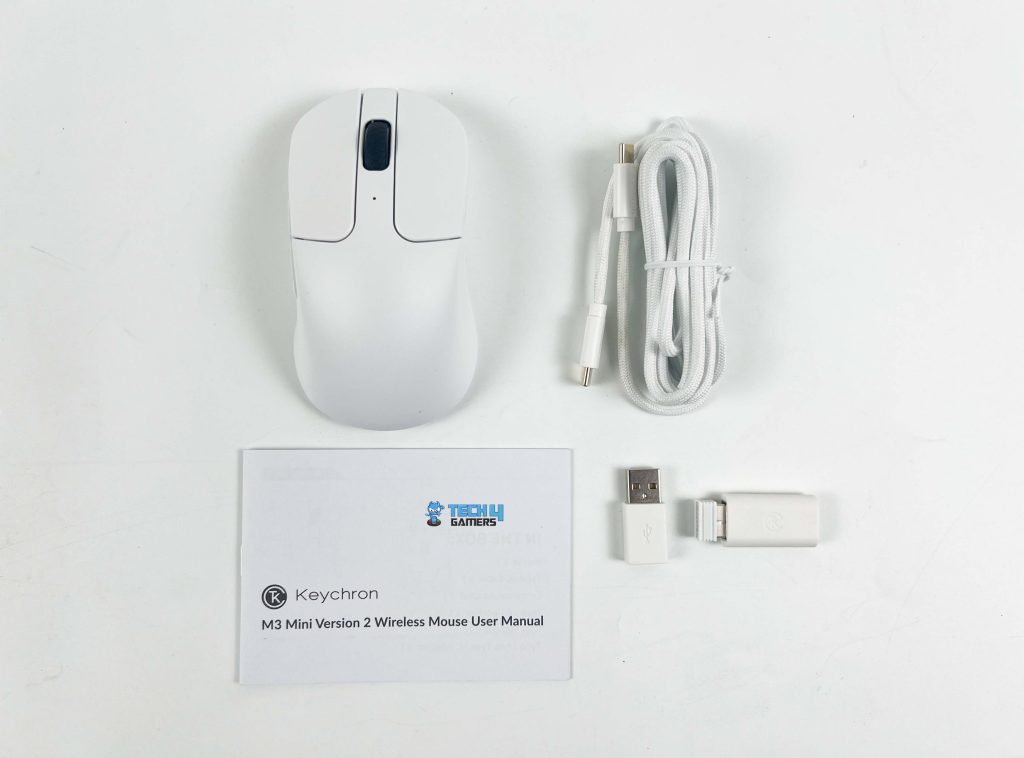
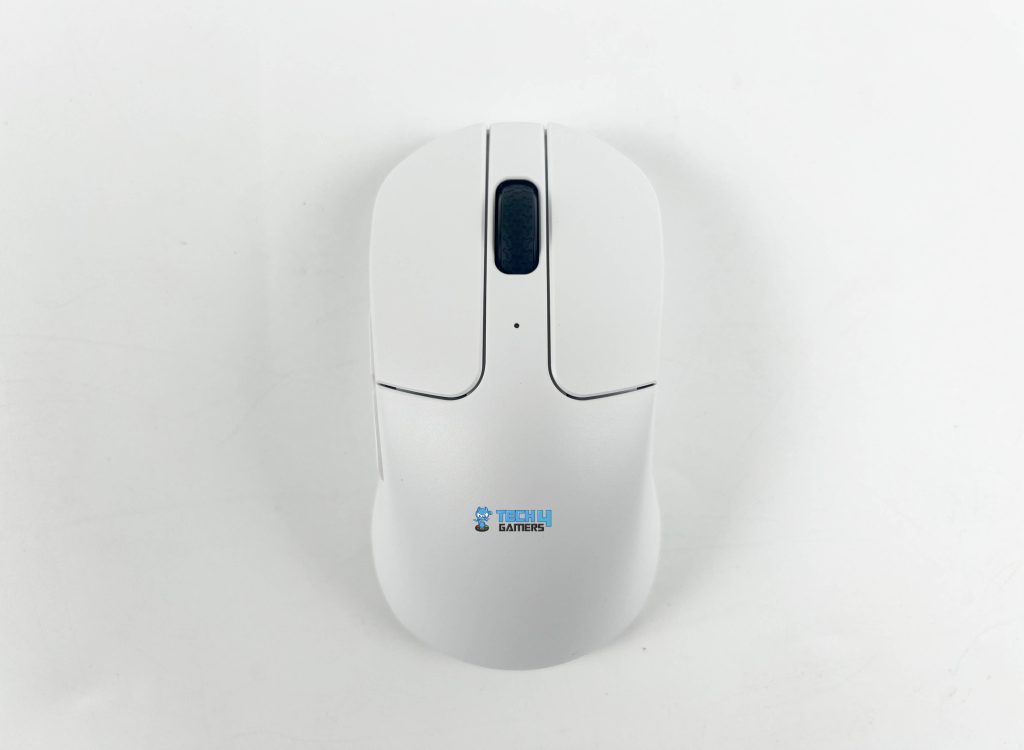
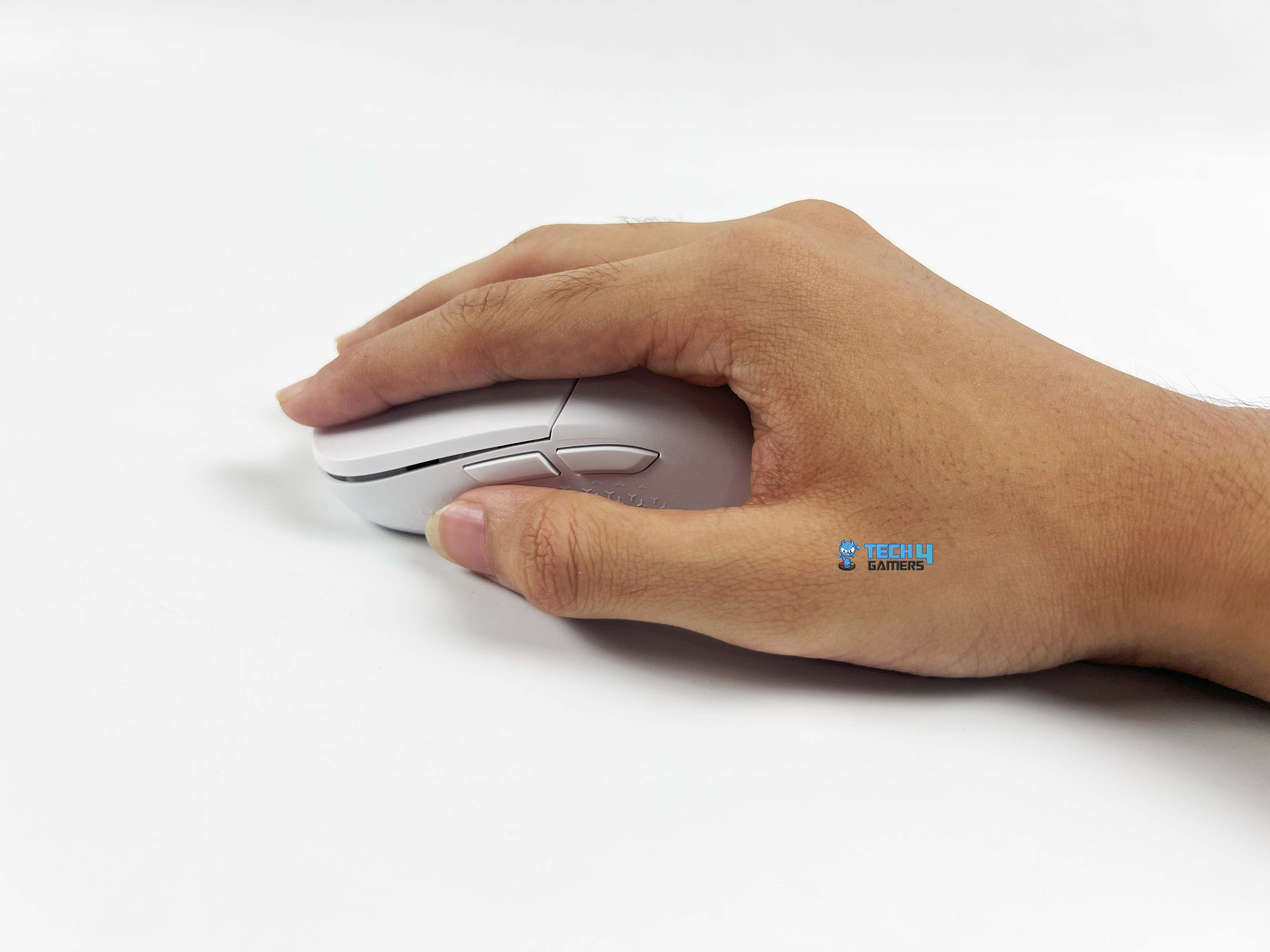
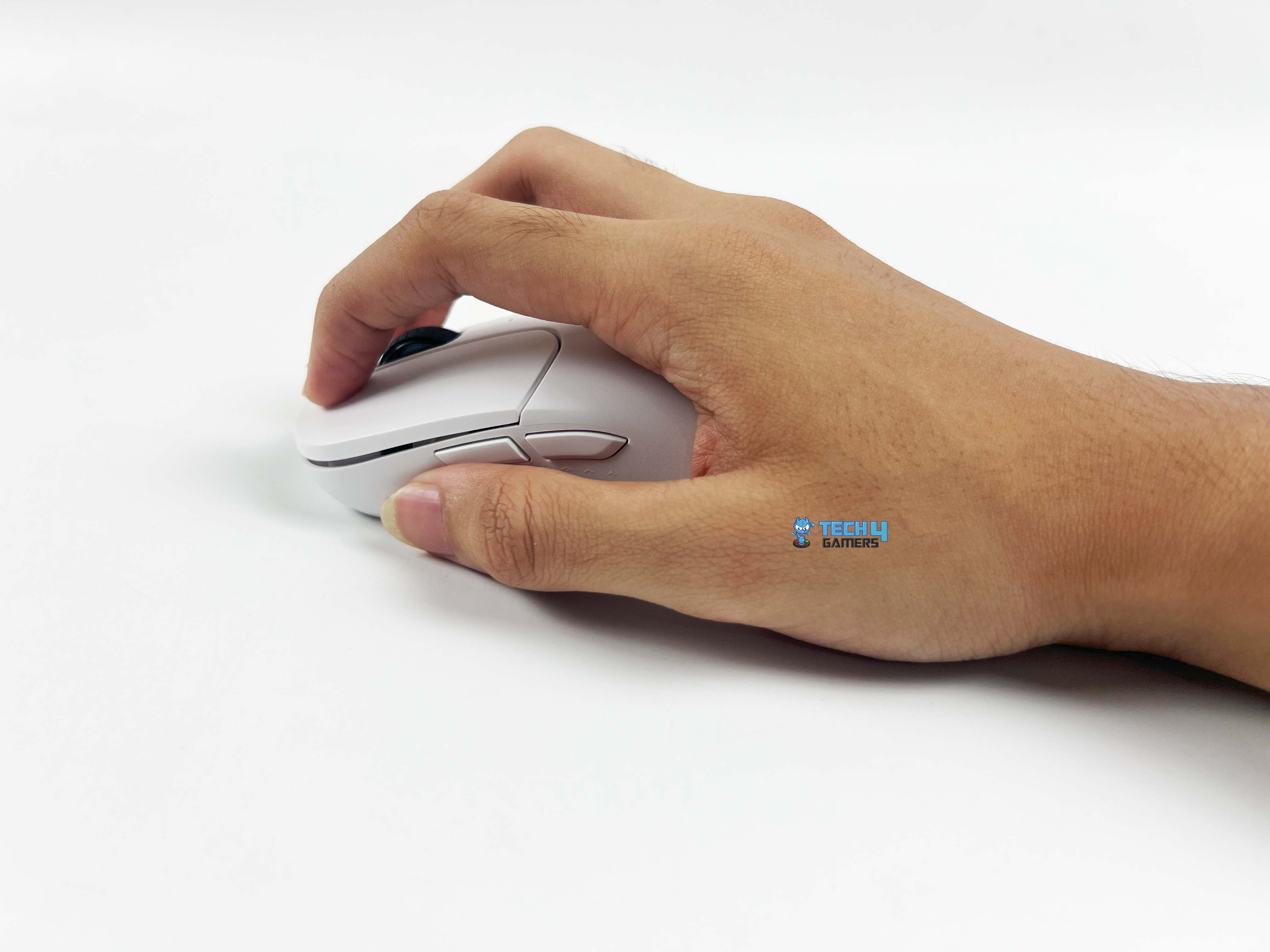
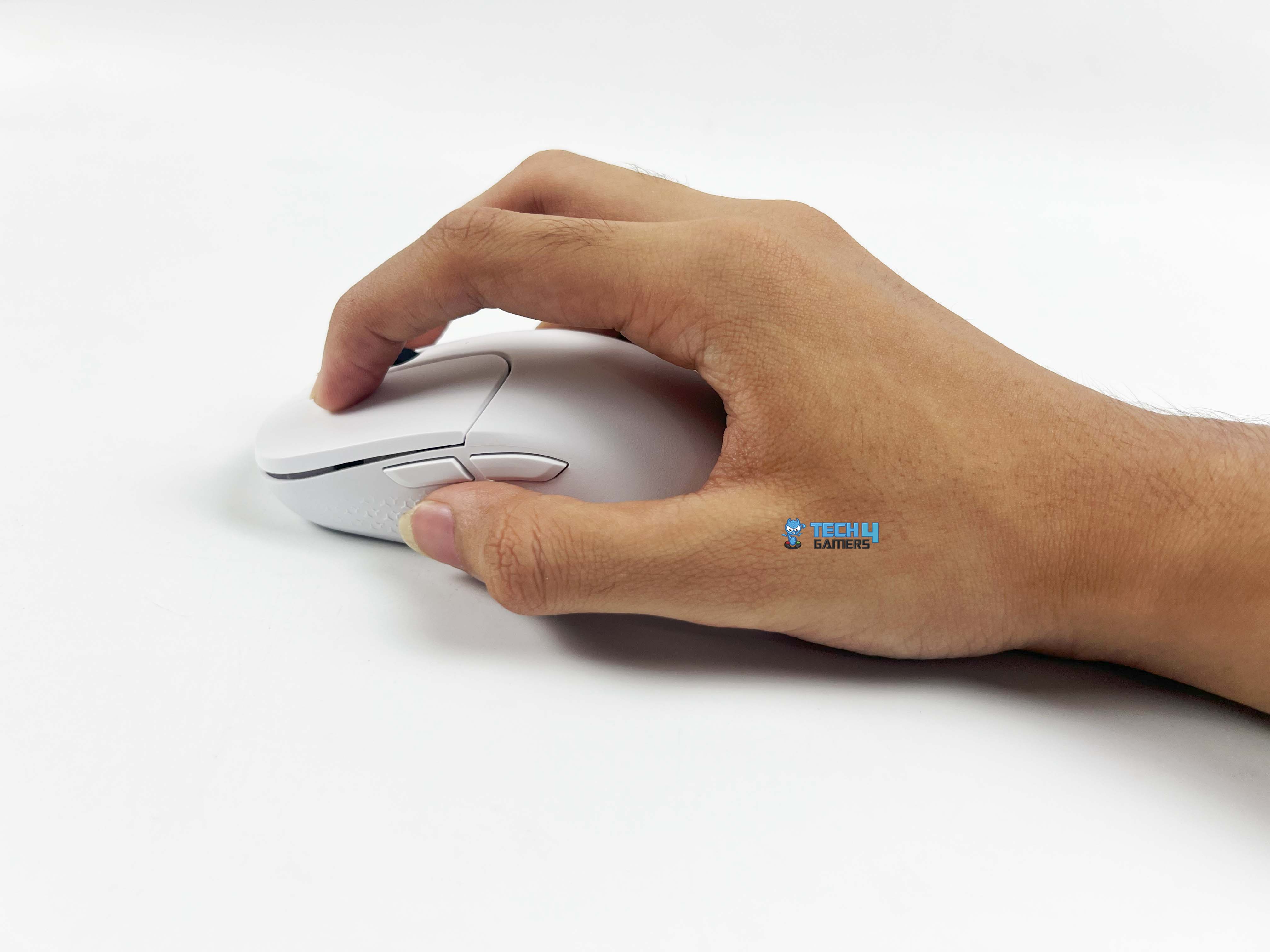
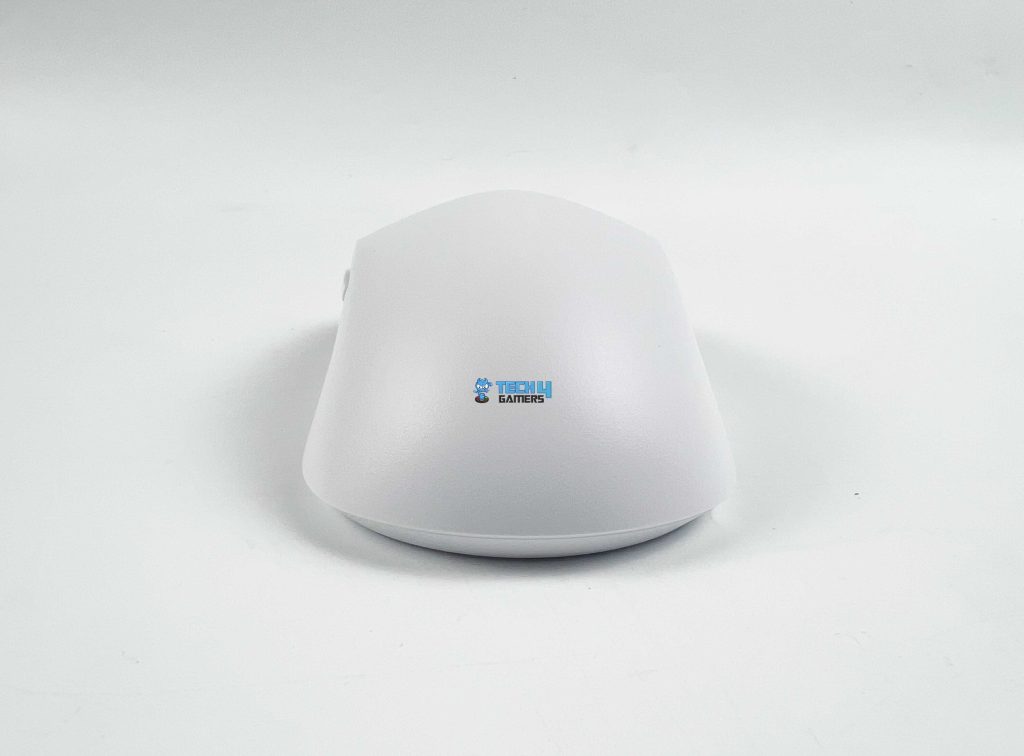
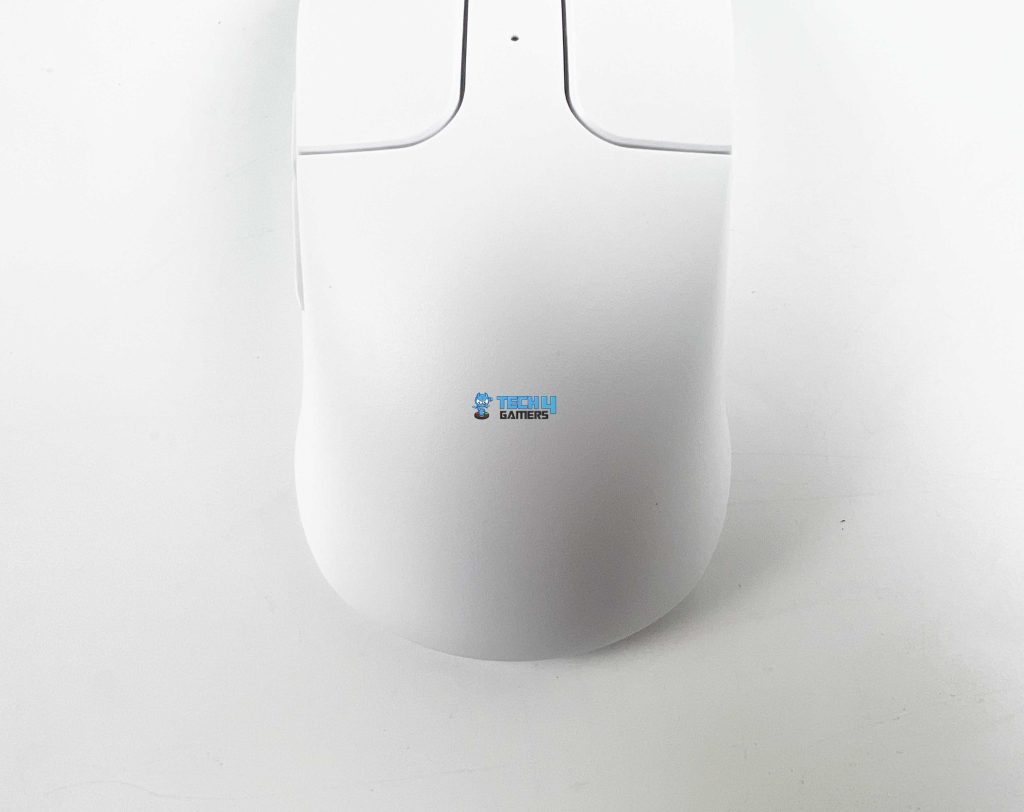
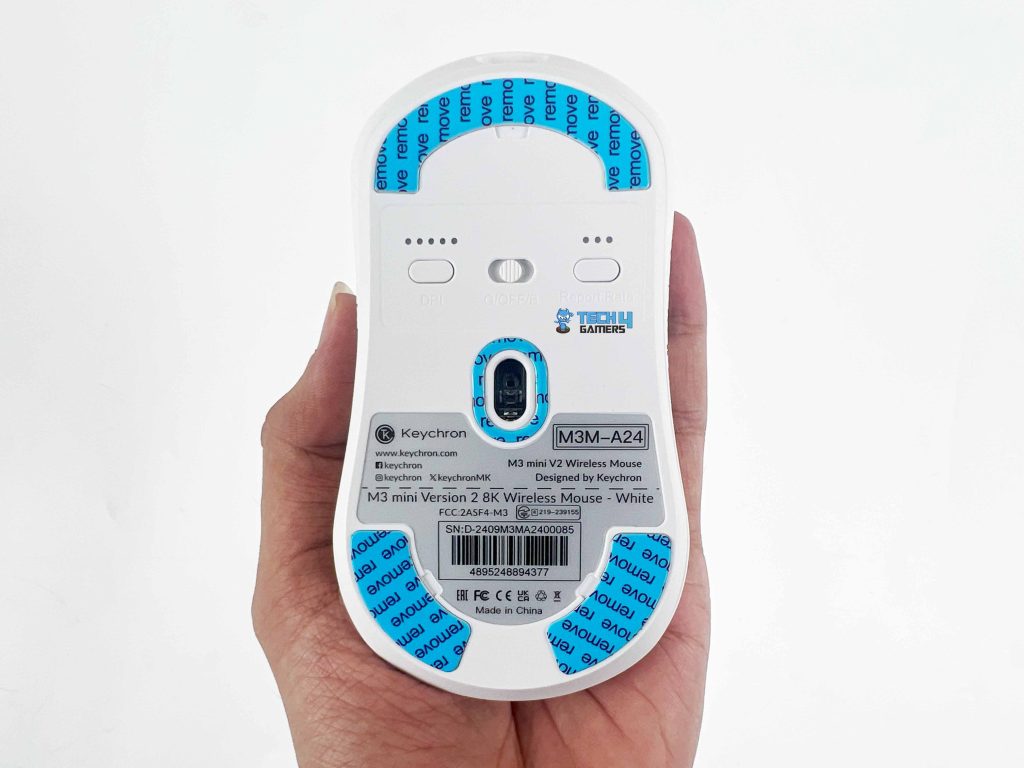
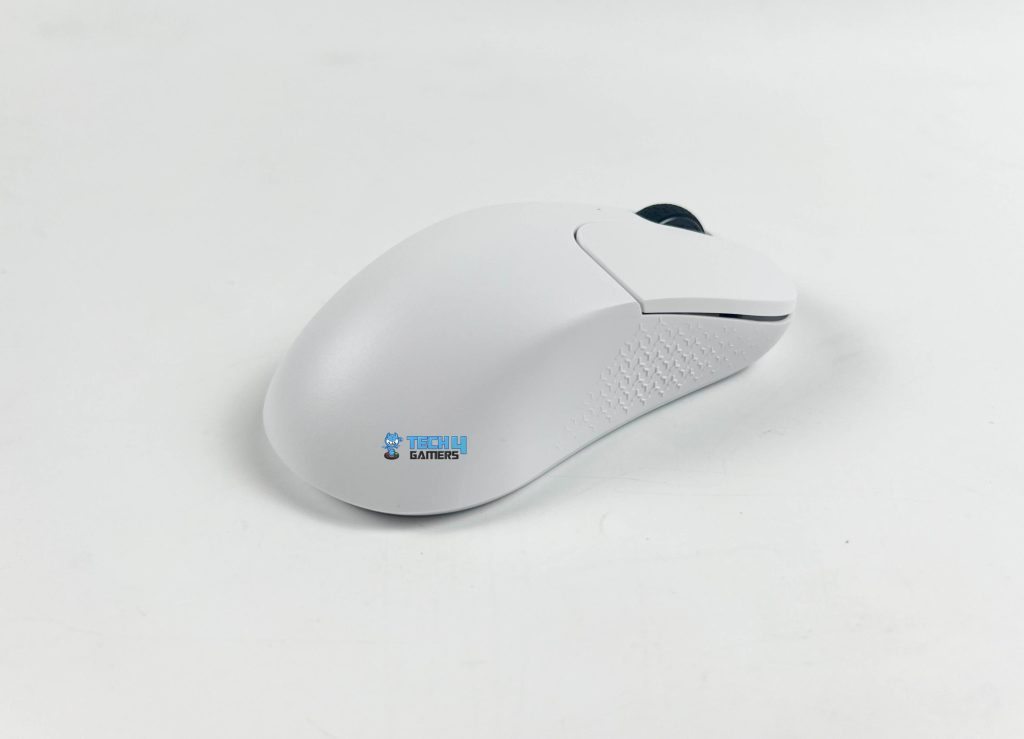
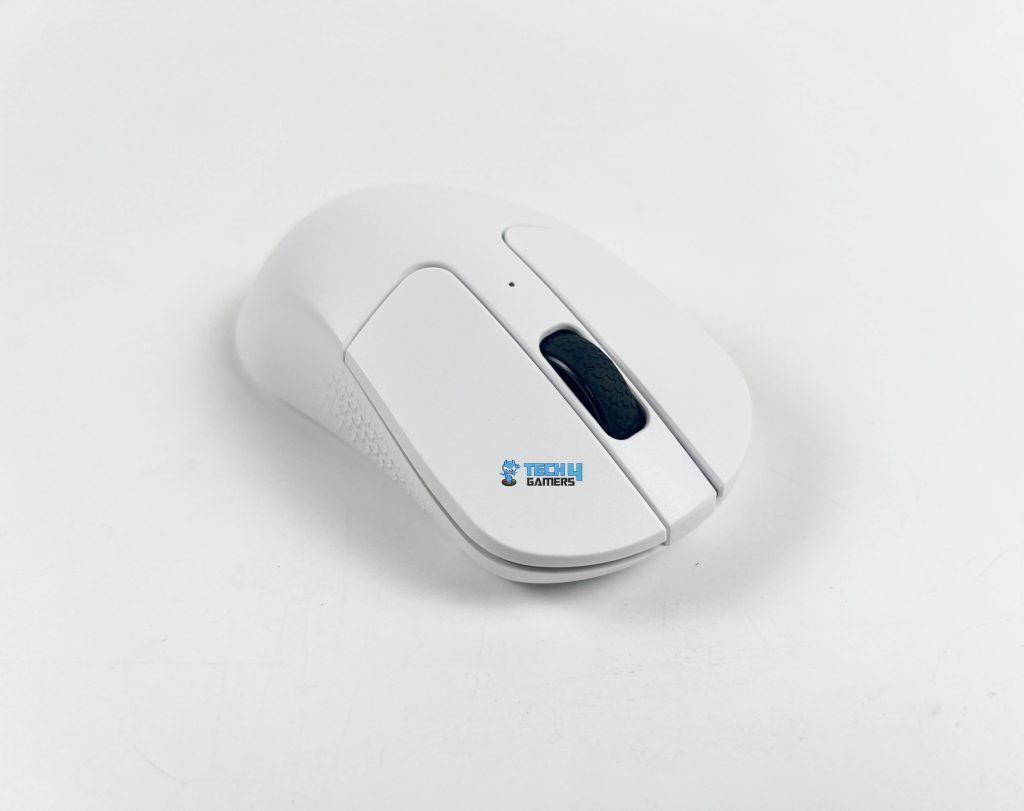
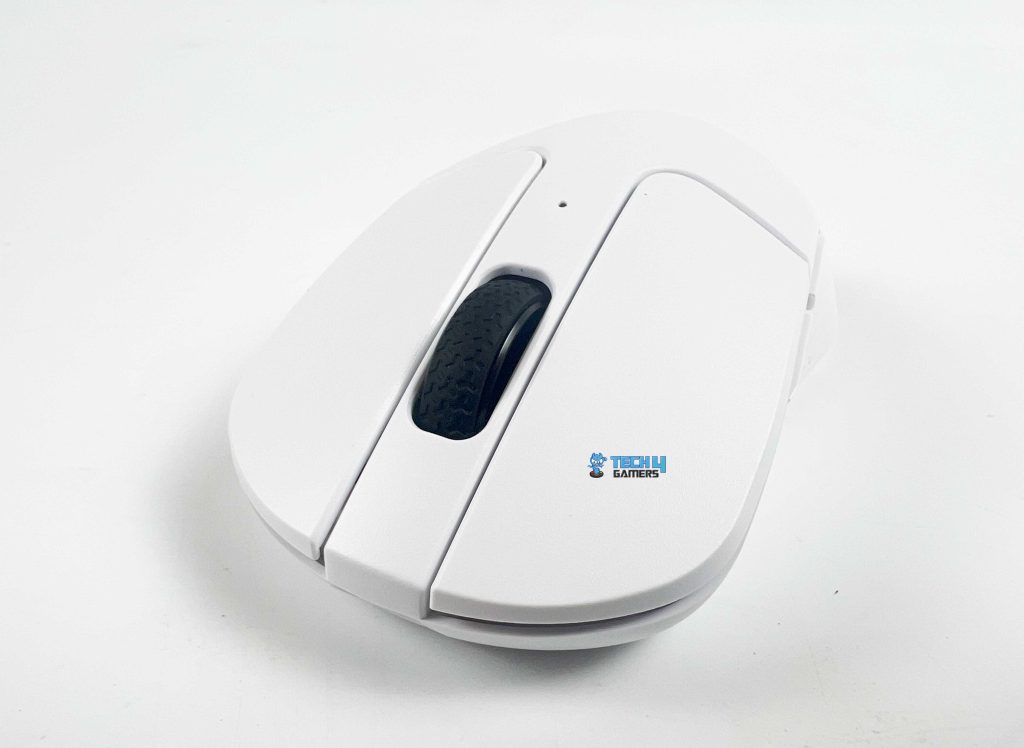
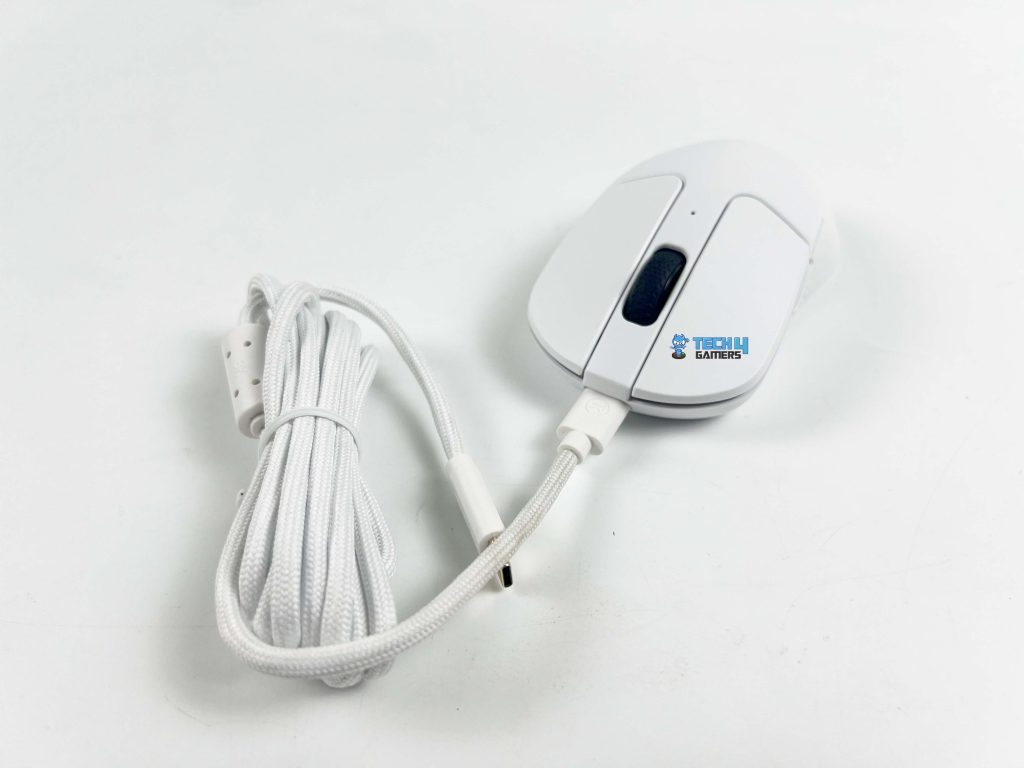
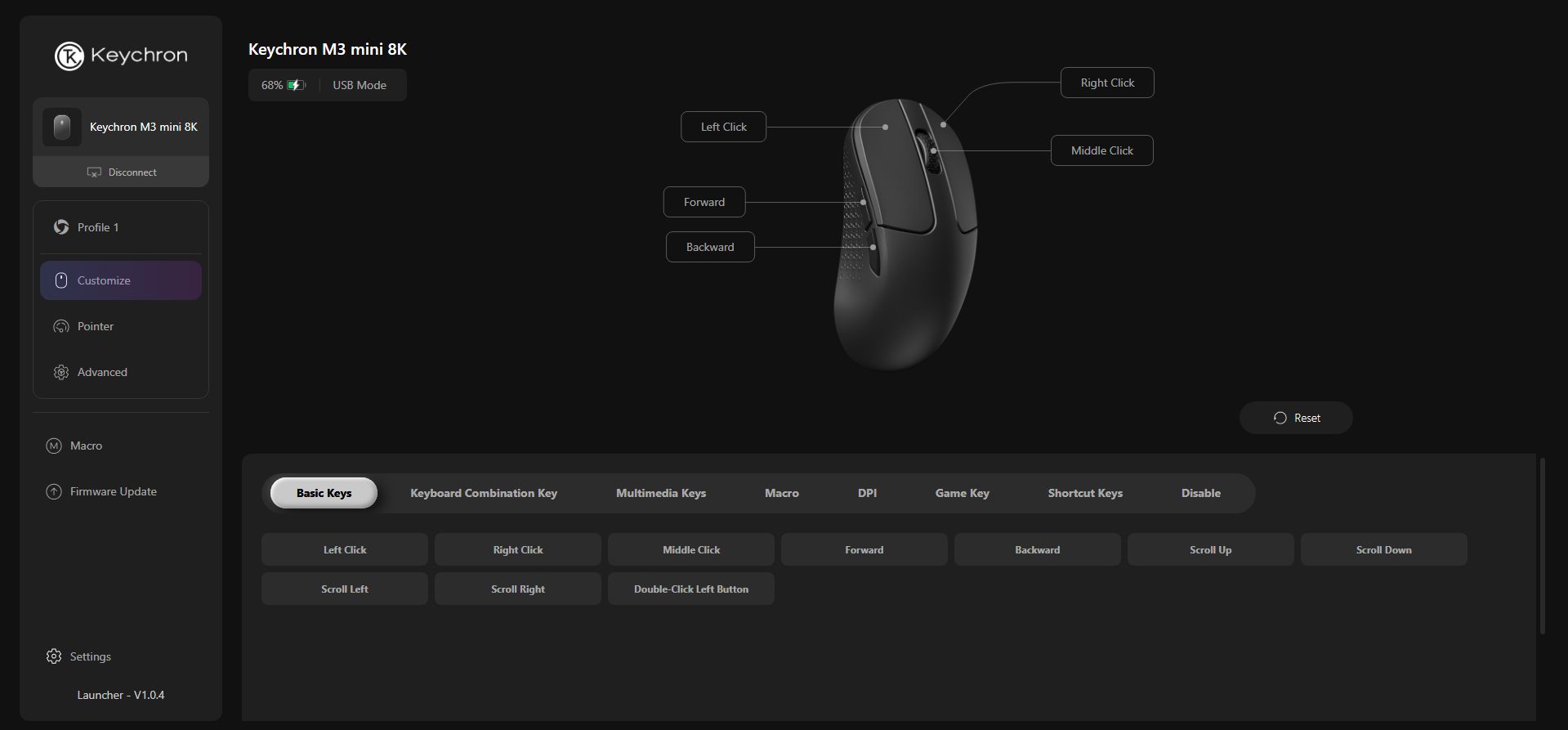
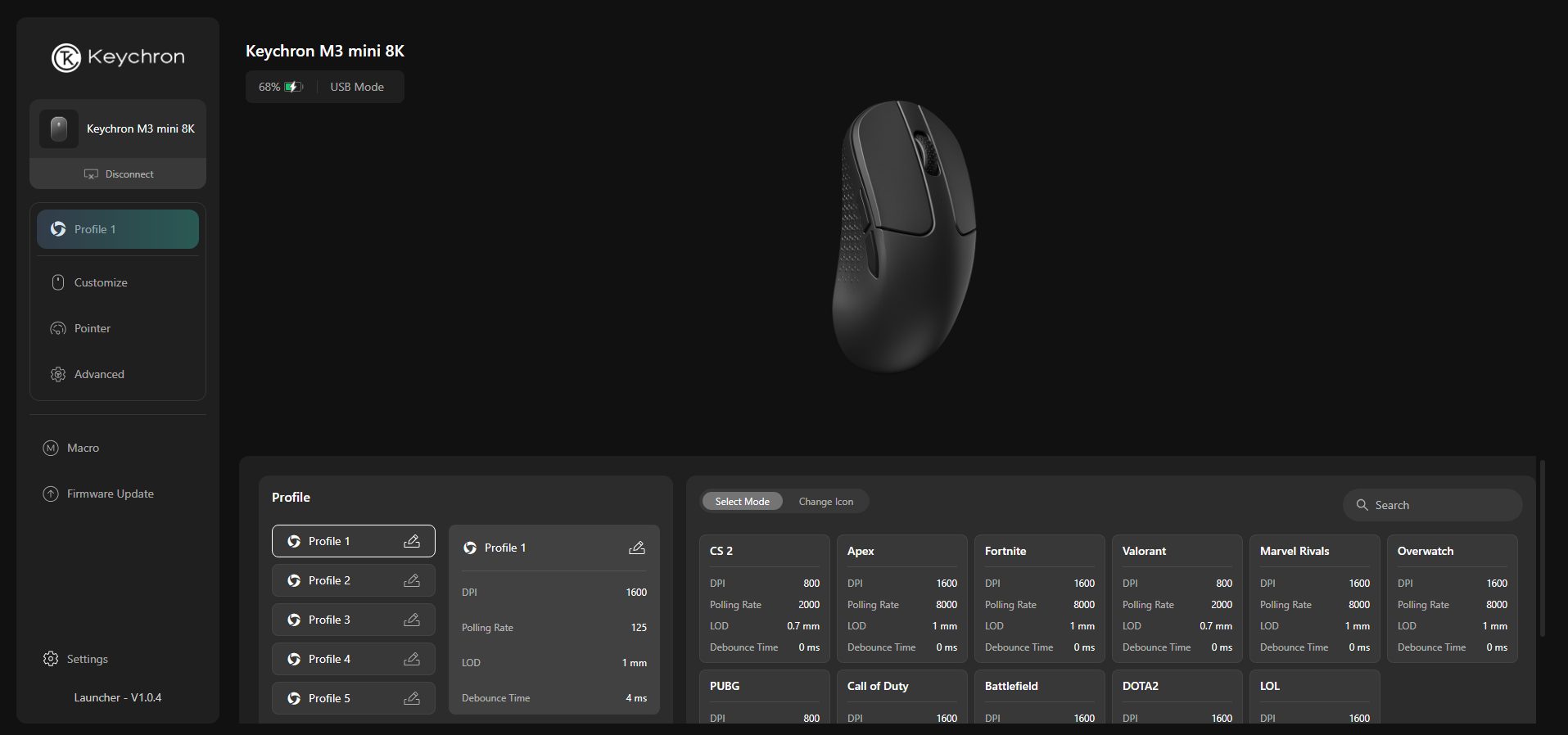
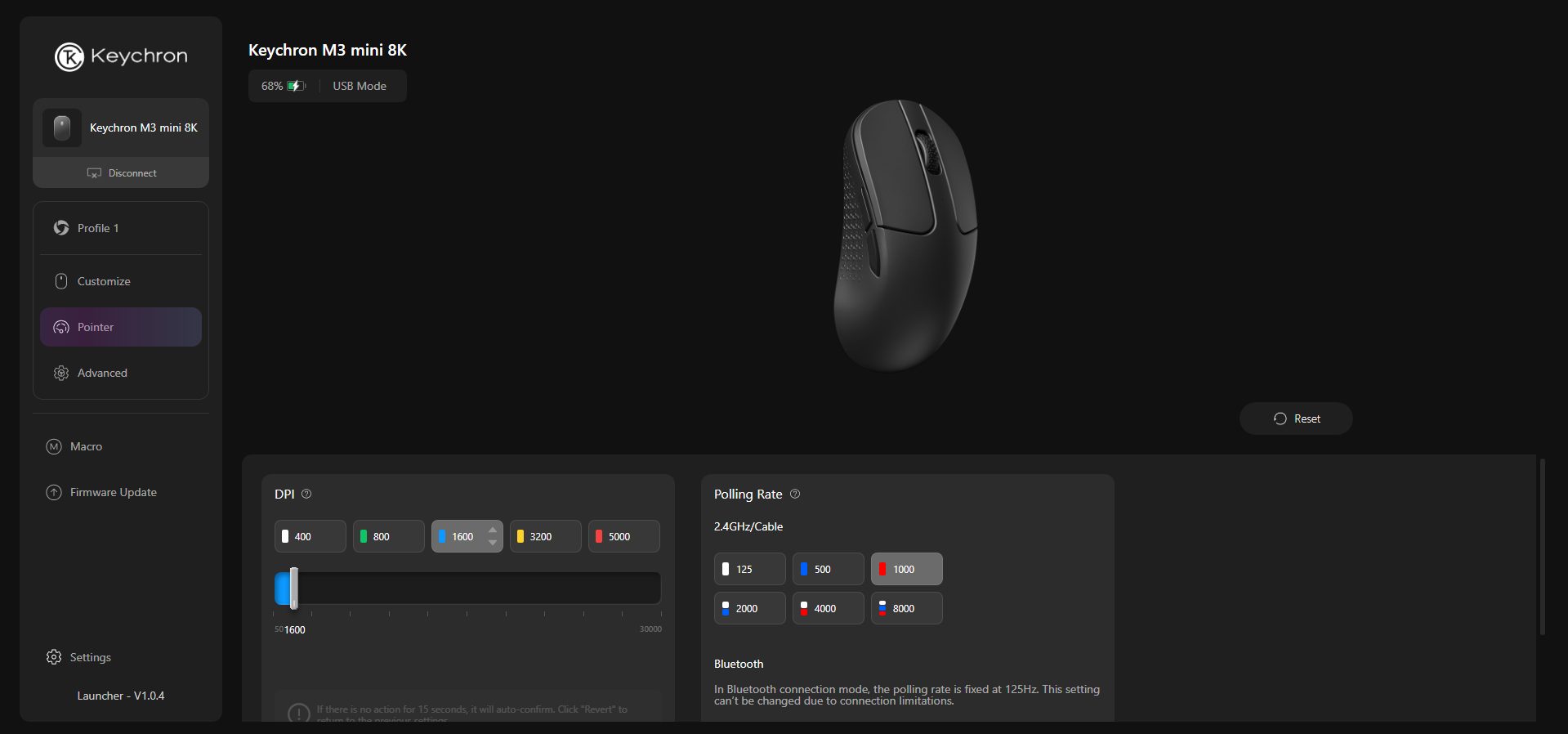
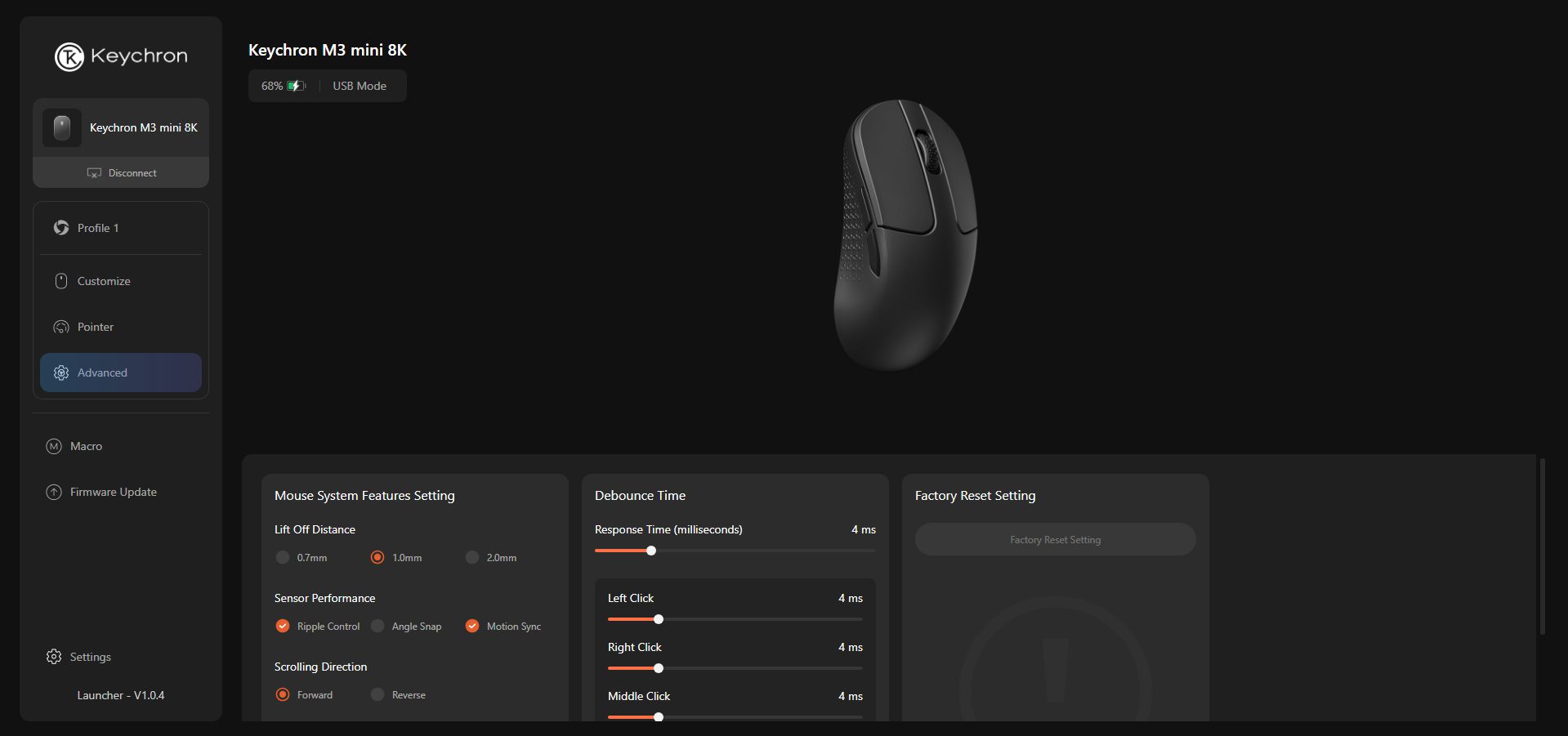
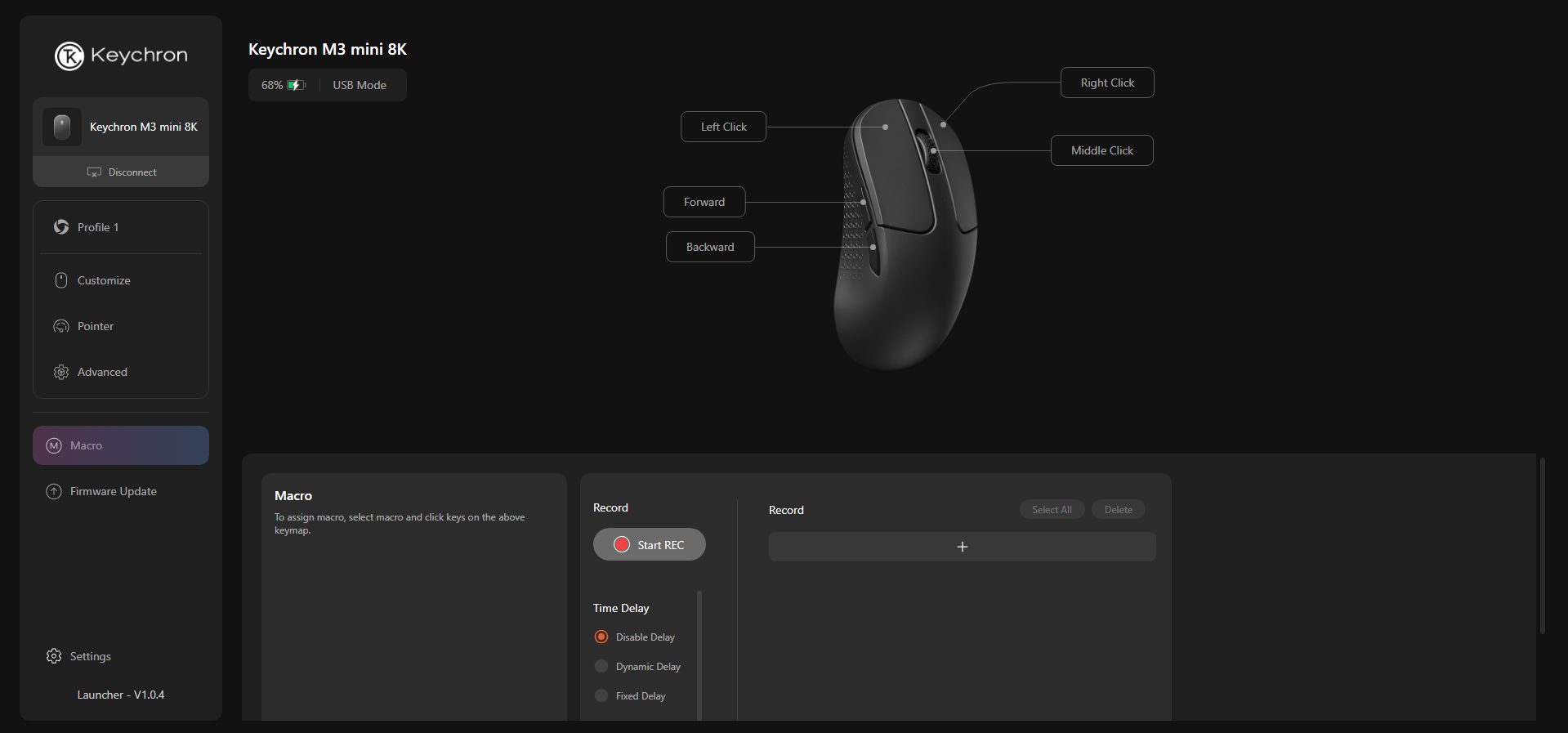
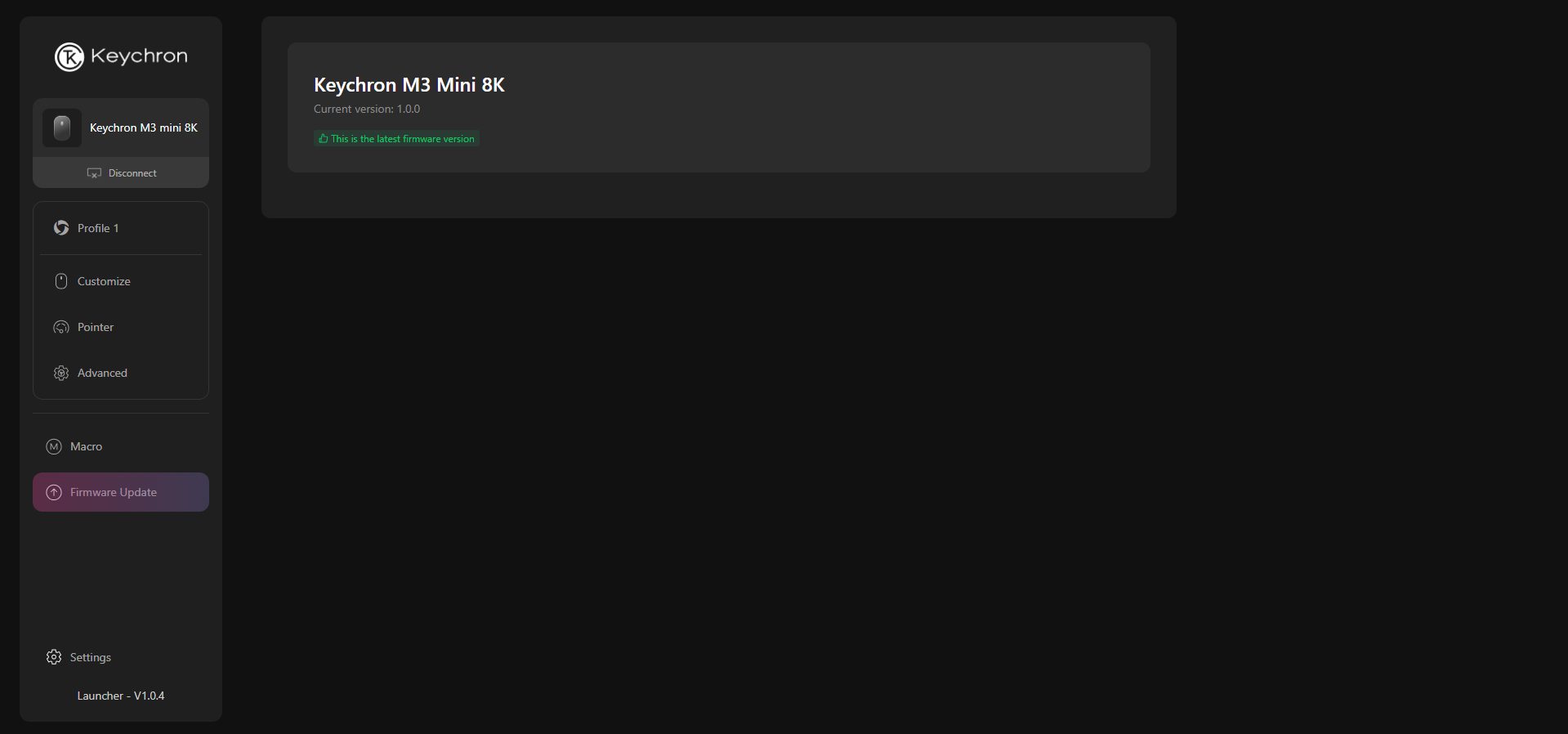


![Corsair Dark Core RGB Pro Review [Hands-On] Corsair Dark Core RGB Pro - 9 Separate RGB Zones](https://tech4gamers.com/wp-content/uploads/2023/04/Corsair-Dark-Core-RGB-Pro-9-Separate-RGB-Zones.jpg)
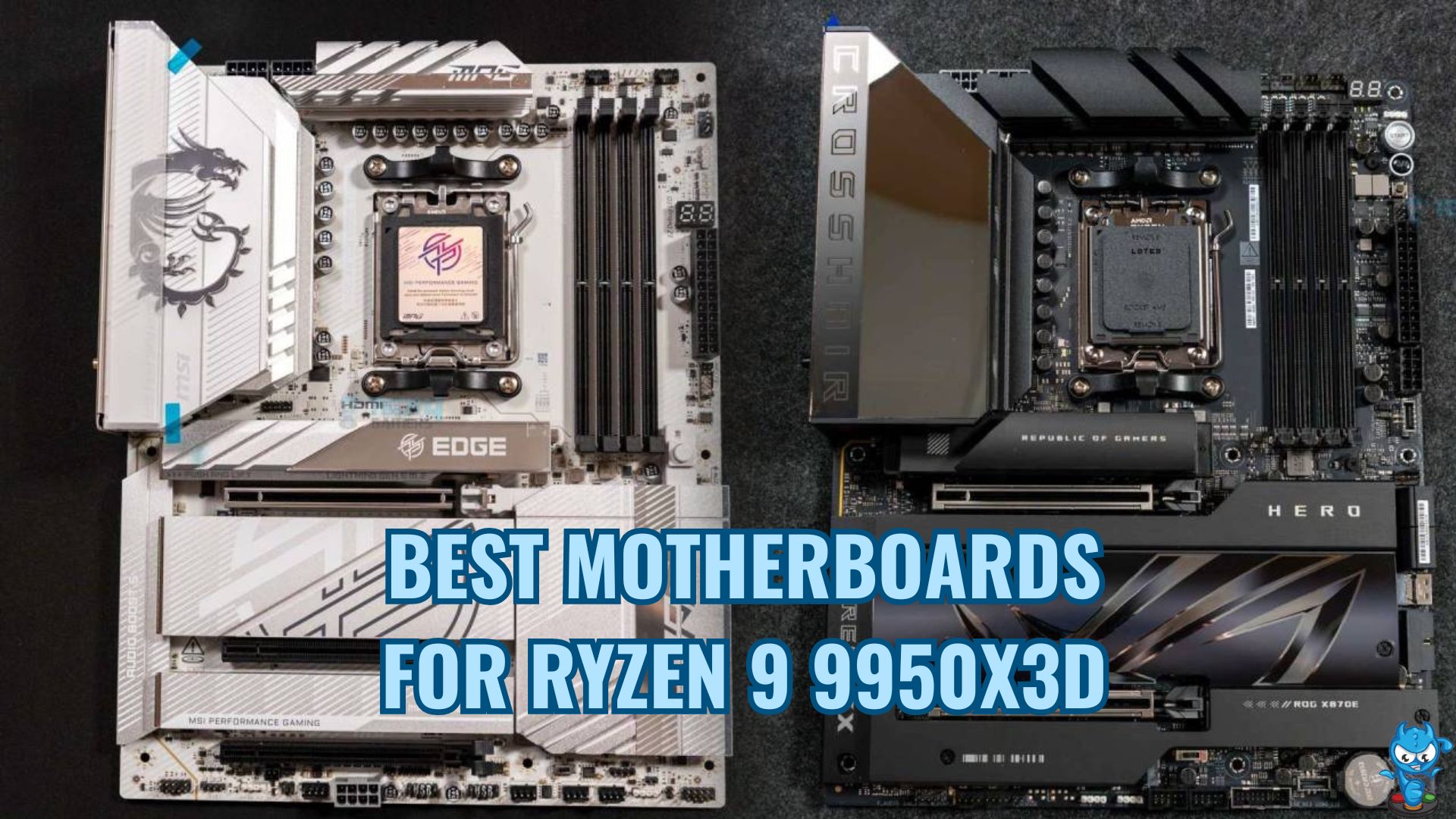
![The Best Claw Grip Gaming Mouse [Hands-On-Tested] Best Claw Grip Gaming Mouse](https://tech4gamers.com/wp-content/uploads/2023/04/Best-Claw-Grip-Gaming-Mouse-218x150.jpg)
